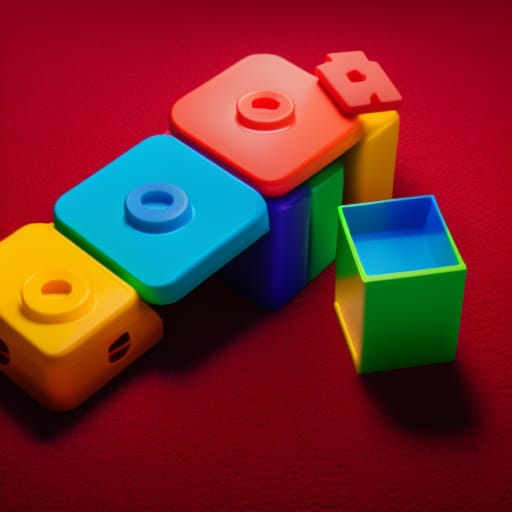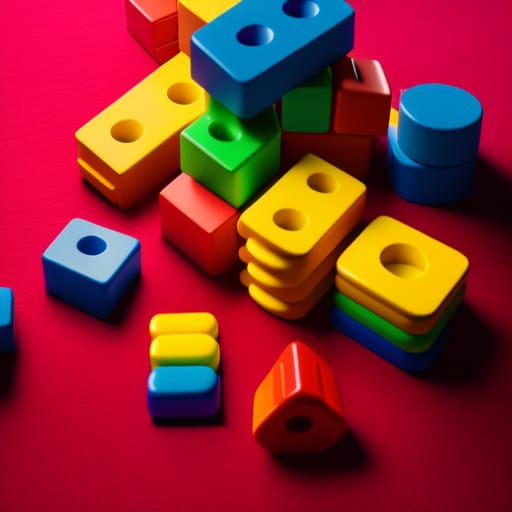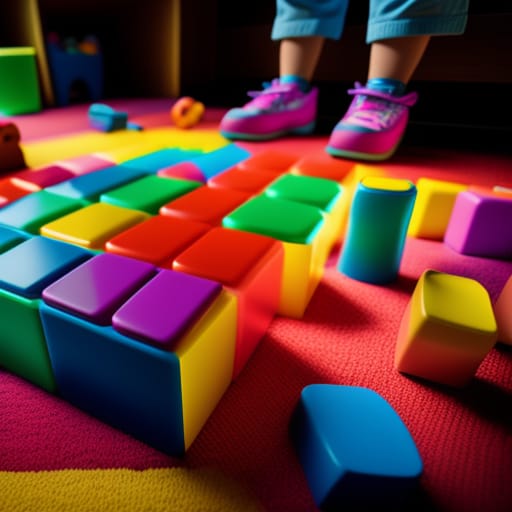Building block sets are classic toys that have educated and entertained children for generations. These simple sets of interlocking blocks allow young minds to explore concepts like math, science, and engineering through hands-on constructive play.
In recent years, building block sets have seen a resurgence in popularity, both for nostalgic parents and a new generation discovering these toys for the first time. With so many options on the market, it can be tricky to know where to start when choosing a building block set for your child. This comprehensive beginner’s guide will explore everything you need to know about building block sets to select the perfect set for your little builder.

What Are Building Block Sets?
Building block sets, sometimes referred to as construction sets, consist of small plastic or wooden blocks that can be connected to build various structures and models. The most well-known example is Lego, which was invented in Denmark in the late 1940s and popularized the idea of interlocking building bricks.
Lego blocks are the most recognizable building block set
The blocks come in a variety of sizes, shapes, and colors, but all have protrusions (“studs”) on top and hollow undersides so they can fit together. Sets include blocks in an assortment of configurations like squares, rectangles, triangles, cylinders, arches, etc. This allows for endless creativity as children can construct anything from a simple house to an elaborate castle.
Early building block sets were made entirely of wood, but most modern sets use durable and lightweight plastic. Sets range from basic bricks for free-form buildings to themed kits with specialized pieces to recreate specific objects like vehicles, buildings, animals, and more. The modular nature of building blocks makes them highly engaging and educational toys.

Benefits of Building Block Play
Playing with building block sets offers a wide array of benefits for children:
- Enhances motor skills – Assembling the blocks requires dexterity, precision, and coordination. Manipulating the pieces helps develop fine motor control.
- Fosters creativity and imagination – Building sets allows for open-ended play without limits, inspiring kids to create unique structures from their own imagination.
- Teaches math and spatial skills – Children learn about shapes, measurements, symmetry, geometry, and fractions through hands-on building activities.
- Introduces STEM concepts – Building simple machines like gears or levers demonstrates principles of engineering, physics, and other technical fields.
- Improves problem-solving – Figuring out how to construct sturdy, balanced structures requires logic, critical analysis, and trial and error.
- Develop persistence – Block construction takes patience and practice. Completing complex builds teaches valuable life lessons.
- Promotes cooperation – Collaborative building activities where children have to share ideas and resources can improve teamwork and communication skills.
With so many options available, how do you select the right building block set for your child? Here are some key factors to consider:
Important Features of Building Block Sets
Age Appropriateness
- Preschool – For very young builders under 3, look for larger pieces with rounded edges that are easy to handle and snap together. Bright colors and fun themes like animals will engage toddlers.
- Ages 4-7 – Larger brick sets with specialized parts like doors, windows, and baseplates allow for more elaborate structures. Look for tie-ins to popular interests like Disney characters, Minecraft, Star Wars, etc.
- Ages 7-12 – More complex builds with motors, gears, and technical Lego Technic sets provide a challenge. Branded kits can teach real engineering and robotics skills.
Number of Pieces
- Small Sets (50-200 pieces) – Allow kids to grasp basics with a low investment. Best for younger kids or to add to larger sets.
- Medium Sets (200-500 pieces) – Provide more variety for creative building at a moderate price point. A versatile starter option.
- Large Sets (500+ pieces) – Give experienced builders the pieces to create intricate, sizable models. It’s more expensive but maintains play value.
Type of Pieces
- Basic Bricks – Simple squares, rectangles, wheels, etc allow open-ended construction. Especially good for early creative play.
- Specialized Elements – Unique pieces like windows, doors, mini-figures, hinges, etc let builders recreate specific objects accurately.
- Themed Kits – Sets based around particular subjects like cities, trains, animals, etc include custom pieces to build pre-designed models.
Compatibility
- Lego – Sets from the leading brand are compatible with all other Lego bricks for unlimited mix-and-match potential.
- Lego-Compatible – Affordable generic brands have similar bricks to Lego that also interlock seamlessly.
- Standalone Sets – Some brands like MegaBlocks have their stud design so bricks only work with that brand.
Once you identify the right features, it’s time to explore some top building block set options for all ages and interests:
Best Building Block Sets
Preschool Building Sets
For early builders, here are engaging starter sets with kid-friendly themes and easy-handling pieces:
LEGO DUPLO My First Animals
- Ages 1.5 – 5
- 62 pieces
- Bright decorated animal bricks
- Comes with a storage bag
- Teaches animal names
**Melissa & Doug Wooden Building Block Set **
- Ages 2+
- 100 wooden blocks
- Smooth rounded corners
- Perfect intro set
- Promotes imaginative play
Magna-tiles Clear Colors 32 Piece Set
- Ages 3+
- Lightweight transparent pieces
- No wrong way to connect
- Enhances spatial skills
- Endless design options
Building Sets for Ages 4-7
More complex sets to challenge new school-aged builders:
LEGO Classic Bricks and Houses Set
- Ages 4+
- 484 pieces
- Windows, doors, plates
- Guidebook for inspiration
- Promotes creative building
PicassoTiles 100 Piece Set
- Ages 4+
- Variety of shapes/sizes
- Magnets allow connections from any angle
- Develops STEM abilities
- Good value under $30
Playmobil City Action Construction Site
- Ages 4-10
- 83 pieces including vehicles & figures
- Themed for imaginative play
- Detailed accessories like traffic cones
- Combines with other Playmobil sets
Advanced Building Kits Age 7+
Bigger and more technologically advanced sets to challenge kids:
LEGO Technic McLaren Formula 1 Race Car
- Ages 8+
- 673 pieces
- Moving paddle shift and steering
- Authentic design from a real F1 vehicle
- Integrates Lego Power Functions
LEGO Ideas Ship in a Bottle
- Ages 12+
- 962 pieces
- Advanced techniques like gears and hinges
- Impressive display model
- Provides a challenging build
K’Nex 35 Model Building Set – Rocket Launch Roller Coaster
- Ages 9+
- 775 K’Nex pieces
- Builds working roller coasters, planes, etc
- Includes battery-powered motor
- Develops STEM skills
K’Nex Education Intro to Structures: Bridges Set
- Ages 9+
- 241 pieces
- Learns fundamentals of bridge engineering
- Build suspension, beam, and truss bridges
- Includes guidebook with experiments
With so many great building toys on the market, you really can’t go wrong. The key is finding a set that matches your child’s age, skill level, and interests. Building block play allows young minds to develop creativity and important skills through hands-on problem-solving. So pick up a set and get your child learning through fun, constructive play today!

FAQs About Building Block Sets
What are the benefits of building blocks for young children?
Playing with building blocks provides many developmental benefits for children. It enhances their motor skills, creativity, math, and spatial abilities. Building block play also introduces STEM and engineering concepts while improving problem-solving, persistence, and cooperation skills.
What age is appropriate for starting with building blocks?
Basic large building blocks can be introduced around 1 year old, but ages 2-3 are ideal for starting structured block play. Look for chunky blocks with rounded edges and bright colors for toddlers. Around preschool age, introduce more complex blocks with specialized pieces to foster more elaborate building.
Should I choose wooden or plastic blocks?
Both wooden and plastic building blocks have pros and cons. Wood has a classic, attractive look but can be prone to splinters. Plastic is extremely durable and allows for more variety of shapes and pieces but lacks the warmth of wood. Ultimately, choose blocks made from quality materials that will withstand regular use by children.
How do I choose a building block set for my child?
Consider your child’s age, dexterity, and interests when selecting a building block set. Smaller starter sets work well for younger kids while older children need more complex builds with many pieces and moving parts to stay engaged. Also, ensure blocks follow safety standards and are compatible with major brands for more play options.
Should I buy branded blocks like Lego or cheaper generic sets?
Lego is the gold standard in building blocks but can be expensive. Compatible brands like MegaBlocks allow you to buy bigger sets for less money. However, their blocks only work with each other, not Lego. Weigh up quality vs cost and think about mixing and matching future sets before deciding which brand to invest in.
How can I encourage continued use of building blocks as my child grows?
The key is finding age-appropriate building sets that match their evolving skills and interests. Look for kits that teach real-world concepts like robotics, engineering, and coding for older kids. Building block play provides a screen-free way to develop STEM abilities that will maintain their engagement for years.